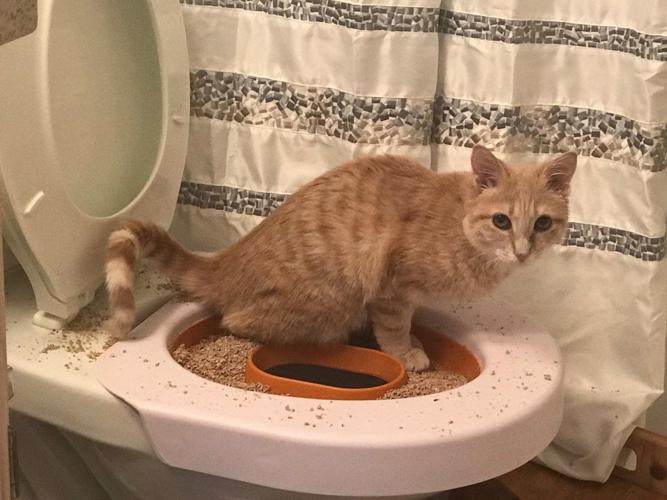Dangers of Flushing Cat Poop Down Your Toilet - Avoid Possible Problems
Dangers of Flushing Cat Poop Down Your Toilet - Avoid Possible Problems
Blog Article
This great article listed below relating to Can You Flush Cat Poop Down The Toilet? is unquestionably intriguing. You should read it.

Intro
As feline proprietors, it's vital to be mindful of just how we deal with our feline close friends' waste. While it may appear convenient to flush feline poop down the commode, this technique can have harmful consequences for both the environment and human wellness.
Alternatives to Flushing
Thankfully, there are more secure and much more responsible means to deal with cat poop. Take into consideration the adhering to options:
1. Scoop and Dispose in Trash
One of the most typical method of taking care of feline poop is to scoop it right into a naturally degradable bag and toss it in the trash. Make certain to use a specialized trash inside story and dispose of the waste immediately.
2. Use Biodegradable Litter
Select eco-friendly feline clutter made from materials such as corn or wheat. These trashes are environmentally friendly and can be safely disposed of in the trash.
3. Bury in the Yard
If you have a yard, think about hiding feline waste in a designated location far from veggie yards and water sources. Be sure to dig deep adequate to avoid contamination of groundwater.
4. Install a Pet Waste Disposal System
Buy a pet waste disposal system specifically developed for pet cat waste. These systems make use of enzymes to break down the waste, minimizing odor and ecological influence.
Health Risks
Along with ecological concerns, flushing cat waste can also position health and wellness dangers to people. Feline feces may contain Toxoplasma gondii, a parasite that can cause toxoplasmosis-- a possibly extreme illness, particularly for expectant females and individuals with weakened body immune systems.
Ecological Impact
Purging pet cat poop presents dangerous microorganisms and bloodsuckers right into the water system, positioning a substantial danger to aquatic ecological communities. These contaminants can adversely impact aquatic life and compromise water top quality.
Conclusion
Accountable pet ownership expands beyond supplying food and shelter-- it additionally involves appropriate waste monitoring. By refraining from purging pet cat poop down the toilet and choosing different disposal approaches, we can reduce our ecological impact and shield human health and wellness.
Why Can’t I Flush Cat Poop?
It Spreads a Parasite
Cats are frequently infected with a parasite called toxoplasma gondii. The parasite causes an infection called toxoplasmosis. It is usually harmless to cats. The parasite only uses cat poop as a host for its eggs. Otherwise, the cat’s immune system usually keeps the infection at low enough levels to maintain its own health. But it does not stop the develop of eggs. These eggs are tiny and surprisingly tough. They may survive for a year before they begin to grow. But that’s the problem.
Our wastewater system is not designed to deal with toxoplasmosis eggs. Instead, most eggs will flush from your toilet into sewers and wastewater management plants. After the sewage is treated for many other harmful things in it, it is typically released into local rivers, lakes, or oceans. Here, the toxoplasmosis eggs can find new hosts, including starfish, crabs, otters, and many other wildlife. For many, this is a significant risk to their health. Toxoplasmosis can also end up infecting water sources that are important for agriculture, which means our deer, pigs, and sheep can get infected too.
Is There Risk to Humans?
There can be a risk to human life from flushing cat poop down the toilet. If you do so, the parasites from your cat’s poop can end up in shellfish, game animals, or livestock. If this meat is then served raw or undercooked, the people who eat it can get sick.
In fact, according to the CDC, 40 million people in the United States are infected with toxoplasma gondii. They get it from exposure to infected seafood, or from some kind of cat poop contamination, like drinking from a stream that is contaminated or touching anything that has come into contact with cat poop. That includes just cleaning a cat litter box.
Most people who get infected with these parasites will not develop any symptoms. However, for pregnant women or for those with compromised immune systems, the parasite can cause severe health problems.
How to Handle Cat Poop
The best way to handle cat poop is actually to clean the box more often. The eggs that the parasite sheds will not become active until one to five days after the cat poops. That means that if you clean daily, you’re much less likely to come into direct contact with infectious eggs.
That said, always dispose of cat poop in the garbage and not down the toilet. Wash your hands before and after you clean the litter box, and bring the bag of poop right outside to your garbage bins.
https://trenchlesssolutionsusa.com/why-cant-i-flush-cat-poop/

I was shown that editorial on How to Dispose of Cat Poop and Litter Without Plastic Bags through an associate on a different site. Are you aware of another individual who is fascinated by the subject? Why not promote it. Thank you for your time. Visit again soon.
Call Today Report this page